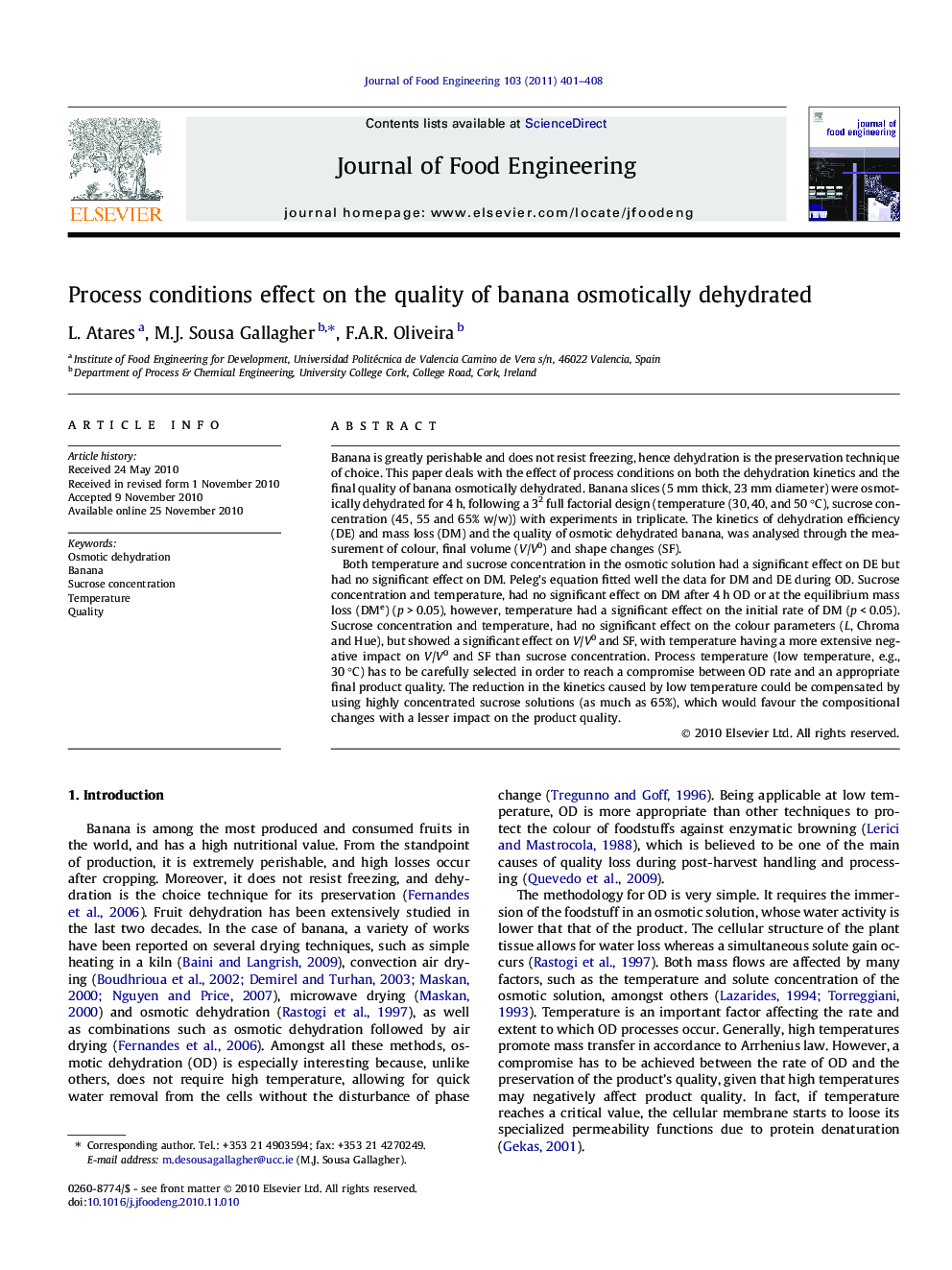| کد مقاله | کد نشریه | سال انتشار | مقاله انگلیسی | نسخه تمام متن |
|---|---|---|---|---|
| 223958 | 464416 | 2011 | 8 صفحه PDF | دانلود رایگان |

Banana is greatly perishable and does not resist freezing, hence dehydration is the preservation technique of choice. This paper deals with the effect of process conditions on both the dehydration kinetics and the final quality of banana osmotically dehydrated. Banana slices (5 mm thick, 23 mm diameter) were osmotically dehydrated for 4 h, following a 32 full factorial design (temperature (30, 40, and 50 °C), sucrose concentration (45, 55 and 65% w/w)) with experiments in triplicate. The kinetics of dehydration efficiency (DE) and mass loss (DM) and the quality of osmotic dehydrated banana, was analysed through the measurement of colour, final volume (V/V0) and shape changes (SF).Both temperature and sucrose concentration in the osmotic solution had a significant effect on DE but had no significant effect on DM. Peleg’s equation fitted well the data for DM and DE during OD. Sucrose concentration and temperature, had no significant effect on DM after 4 h OD or at the equilibrium mass loss (DMe) (p > 0.05), however, temperature had a significant effect on the initial rate of DM (p < 0.05). Sucrose concentration and temperature, had no significant effect on the colour parameters (L, Chroma and Hue), but showed a significant effect on V/V0 and SF, with temperature having a more extensive negative impact on V/V0 and SF than sucrose concentration. Process temperature (low temperature, e.g., 30 °C) has to be carefully selected in order to reach a compromise between OD rate and an appropriate final product quality. The reduction in the kinetics caused by low temperature could be compensated by using highly concentrated sucrose solutions (as much as 65%), which would favour the compositional changes with a lesser impact on the product quality.
Journal: Journal of Food Engineering - Volume 103, Issue 4, April 2011, Pages 401–408